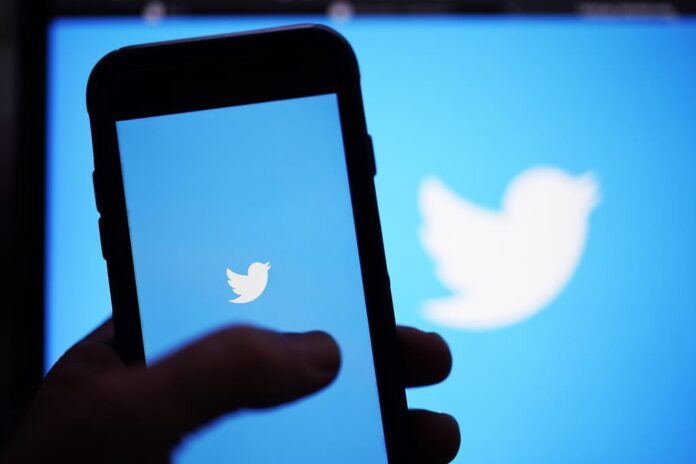The Canadian government is “assessing next steps” in deciding whether it will pay to keep its Twitter accounts verified, the Prime Minister’s Office confirmed on Monday.
Billionaire Tesla CEO Elon Musk recently purchased Twitter for $44 billion, and has since pledged to make major changes to the way the company hands out its blue checkmarks — the badge that identifies users as the real deal, not an impersonation or fake.
While few details have been publicly confirmed, the latest proposal Musk has floated on Twitter is that anyone paying the $8-per-month subscription fee for Twitter Blue would obtain a badge. What he hasn’t confirmed, however, is whether Twitter will require individuals to present proof of their identity — a key component of the current verification system.
“Given the fluidity of the situation with respect to Twitter’s policy, the government is assessing next steps on verification,” a spokesperson for PMO told Global News in a statement.
Although details emerging about Musk’s verification plan are slim, they still have disinformation experts concerned. Bad actors could abuse these markers of authenticity, they warn, particularly if the people running accounts with a high degree of public interest decide not to pay the monthly fee for a verification badge.
“The blue checkmark serves as an important verification step to show the audiences that you are actually seeing tweets from a real account and not a parody or a troll, etc.,” said Mary Blankenship, a University of Nevada researcher who looks at how misinformation spreads through Twitter.
“It’s strange that Musk does not recognize that is the purpose that the blue checkmarks serve.”
A senior government source told Global News that there “isn’t currently clarity” on Twitter’s planned verification policies — even on the price of the subscription itself, which appeared to drop from initial reports suggesting it would be $20-per-month to $8-per-month as Musk suggested in an exchange with author Stephen King on Twitter.
This makes it difficult for the government to understand the “implications” the proposed changes could have for currently verified users.
“This is taking place over a matter of days, and clarity on the policy is not currently available. Managing staff for Twitter in Canada are also no longer in place,” the senior government source told Global News.
1:57
Twitter employees sue after mass layoffs following Elon Musk’s takeover
The government runs many verified accounts, with many government departments and agencies having two official Twitter accounts — one in each official language.
Even an $8-per-month subscription could add up quickly when you consider that the public service alone is made up of about 130 departments and agencies.
“At the officials level across government, including at Treasury Board and PSPC, work is taking place now to monitor and assess changes and possible changes to how the platform operates, as well as the implications this may or may not have on the government’s use of the platform,” the senior government source said.
Trending Now
Judge rules Ford, Jones immune from testifying at Emergencies inquiry
Canada facing ‘aggressive games’ from China, others amid interference report: Trudeau
“As things evolve, more information will be shared.”
Meanwhile, Cossette Inc., the marketing agency responsible for a large portion of the government’s advertising, has advised Ottawa to “pause all advertising on Twitter” and “monitor the situation closely.”
“We are still working to understand the impact of Twitter’s new verification rules for advertisers and will update our guidance once we receive more clarity from Twitter,” added Brian Cuddy, Cossette’s SVP for responsible media solutions.
But as the Canadian government grapples with how best to handle the situation, Blankenship pointed out that Twitter users around the world are facing similar questions. And while Musk has said the price of verification will be “adjusted by country proportionate to purchasing power parity,” the researcher warned $8 can be a “huge deal” in some parts of the world.
“This doesn’t just affect people in the West or in Europe,” Blankenship, whose relatives live in Ukraine, said.
Journalists and activists around the world “rely on platforms like Twitter to convey their message within nations that may have authoritarian leaders or may not have a lot of rights and privileges,” Blankenship explained.
“So for these countries, access to verified journalists and scholars is very important and may be one of the only resources that regular citizens have to viable information.”
In real life, someone hoping to impersonate another person would have to spend time and money buying matching clothes, changing their hair, learning mannerisms and emulating a personality.
However, with social media reducing everyone to a uniform profile layout and their voices to a standard font, pretending to be someone else is much easier on the internet.
That’s why most social media platforms have implemented some form of a badge system, which serves as an indicator that you have proven you’re the real “you.”
4:37
Business News: Tumultuous first week for Elon Musk at Twitter
Twitter explained the intention behind verification in a 2017 tweet, after the platform paused its verification process after coming under fire for verifying an organizer of the Unite The Right rally in Charlottesville, where a counter-protester was killed.
“Verification was meant to authenticate identity & voice but it is interpreted as an endorsement or an indicator of importance,” it wrote. “We recognize that we have created this confusion and need to resolve it.”
While one of Twitter’s criteria for verification is that an account must be “notable,” it doesn’t only apply to celebrities or world-famous brands. The social media platform also hands out blue badges to accounts run by news organizations, governments and law enforcement — which often convey important information to the public, especially in times of crisis.
For example, police services regularly tweet out warnings to the public about areas where operations are underway. During the COVID-19 pandemic, public health updates have often been shared through verified accounts belonging to public health officials and politicians.
But Musk appears not to understand the original intention of verification, Blankenship warned.
She pointed to his Nov. 1 tweet, in which he called the existing verification process a “lords” and “peasants” system.
“There’s a perhaps misunderstanding in the purpose that the blue checkmarks serve,” Blankenship said.
“On this platform, of course, as many are aware, there are a lot of trolls, lots of bots, a lot of various accounts trying to pose as journalists or as scholars … so the blue checkmark serves as an important verification step.”
Verification serves as a “primary fact-checking tool,” according to Ahmed Al-Rawi, who runs the Disinformation Project at B.C.’s Simon Fraser University. It allows users to see where a message is coming from — and what biases the messenger might have.
If anyone with $8 per month can pay for the blue badge, especially if Twitter opts to drop existing identification requirements, it’ll be much easier for fake accounts to do much more damage, Al-Rawi warned.
“(There) will be on a flood of inauthentic users who might weaponize their presence on the platform and create more toxicity,” he said.
He warned that if Twitter stays on its current path, it will return to a time when “bad actors were present and where they were actively weaponizing the platform to serve their own interest.”
“I think that if this continues, the political polarization on Twitter will be further intensified,” Al-Rawi warned.



